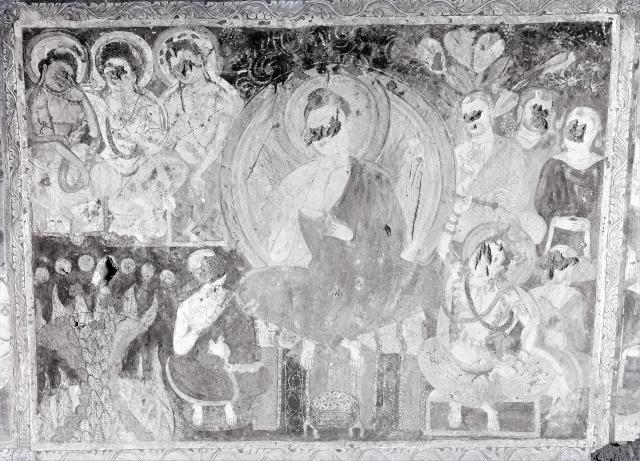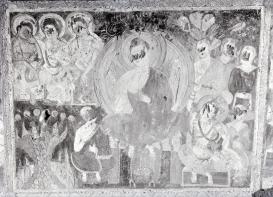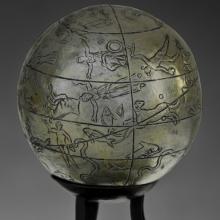Buddhism played a significant role in the formation of cosmological notions in East Asian cultural tradition. Its impact is multi-layered – while the Sumeru world-system gave a deep impact on the visualization of the cosmos, astral accounts compiled in Buddhist literature transmitted the up-to-date astrological science of India or/and Central Asia to East Asia.

The Buddha’s sermon on the end of the world, Kizil Cave 207 (the Painters’ Cave). Museum für Asiatische Kunst, Staatliche Museen zu Berlin (Foto-Nr. B 812).
While this transmission process has drawn significant attention in philological studies, the attempt to trace its process in visual materials had been less undertaken. This research project thus aims to study the cosmological and astral icons represented in Central Asian Buddhist mural paintings in the fifth to seventh centuries, with a special focus on Dunhuang, Kucha and Bamiyan.
Individual icons will be systematically organized and then inputted into the annotated image database created within the frame of the ongoing research project “Visualizations of the Heavens and Their Material Cultures in Eurasia and North Africa (4,000 BCE-1700 CE)” (Department III). Along with the systematic work on the entry on database, this project also aims to develop the methodology on how to trace the transformation of certain cosmological notions – like world, heaven, and cosmos – across different cultural spheres with different religious backgrounds by referencing both images and texts.


